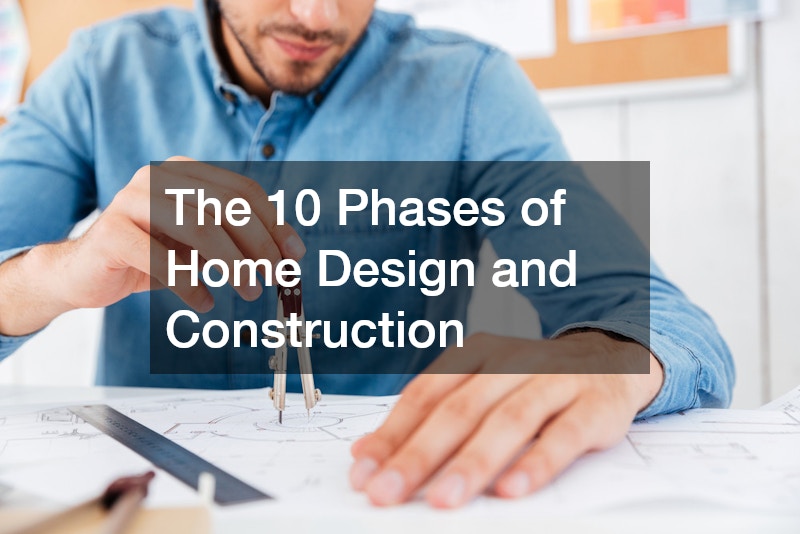Designing and building a home is a complex process that requires careful consideration of modern needs, sustainability, and universal design principles. This guide outlines the key phases to help create a functional, visually appealing, and comfortable living environment.
- Understanding Universal Design
Definition and Principles
Universal design focuses on creating homes that are functional and accessible for everyone, regardless of age or physical ability. Its principles include flexibility, simplicity, and equitable use, ensuring homes are adaptable and long-lasting.
Benefits of Universal Design
This approach improves accessibility and safety, contributes to healthier living environments, and incorporates ergonomic innovations. Homes built with universal design principles are more marketable and resilient to changing needs.
History and Evolution
Initially developed for public spaces, universal design has since been embraced in residential architecture, emphasising inclusivity. Over time, it has evolved to integrate elegance and functionality seamlessly.
Implementation Challenges
Adopting universal design can pose challenges, such as higher initial costs and the need for specialised expertise. Modifying traditional designs and overcoming resistance from stakeholders concerned about aesthetics can also be obstacles.
Future Trends
The future of universal design includes integrating advanced technology, sustainable materials, and prefabricated solutions to improve efficiency and adaptability.
- Choosing the Right House Plan

Understanding Your Needs
Begin by evaluating your lifestyle, family size, and functional requirements. Consider how each room will be used and balance aspirational features with practical necessities.
Types of House Plans
Options range from compact bungalows to sprawling estates, each catering to different preferences and budgets. Carefully evaluate these to find a plan that aligns with your vision.
Key Considerations
Consider budget constraints, environmental factors, and future-proofing. Proximity to amenities and essential services is also important. Collaborate with a reputable contractor to ensure your plan is both realistic and aspirational.
Consulting Professionals
Engage architects and builders with a proven track record to avoid costly mistakes. Expert guidance helps optimise space and incorporate the latest technology.
Customising Plans
Modifications to existing plans can personalise your design. Work with professionals to ensure changes align with universal design principles and maintain safety and functionality.
- Initial Steps in Home Construction
Site Selection
Choose a site with favourable topography, climate, and stability. Flat, accessible land is ideal for universal design, ensuring ease of movement and construction.
Budget Planning
Establish a detailed budget that accounts for essential features and potential unforeseen costs. Collaborate with contractors for accurate cost estimations.
Acquiring Permits
Ensure compliance with Australian building codes by securing necessary permits. Experienced contractors can streamline this often complex process.
Design and Architecture
Transform your vision into detailed plans by working with skilled architects. Prioritise features that enhance sustainability and adaptability.
Selecting a Contractor
Thoroughly vet contractors for their experience, reputation, and ability to deliver on universal design principles. Draft a clear contract covering budget, timelines, and responsibilities.
- Sustainable Building Materials
The Case for Sustainability
Using eco-friendly materials improves indoor air quality, reduces waste, and enhances energy efficiency, aligning with universal design objectives.
Material Options
Sustainable materials include bamboo, concrete, and reclaimed timber, each with unique benefits. Choose based on durability and environmental impact.
Cost Analysis
While some sustainable materials may have higher upfront costs, their long-term energy savings and durability make them cost-effective. A thorough analysis can highlight their value.
Environmental Impact
Incorporating eco-friendly materials reduces your home’s carbon footprint and supports environmental conservation.
Long-term Benefits
Sustainable materials create durable, resilient homes, addressing climate challenges and resource scarcity while reflecting responsible construction practices.
- Incorporating Energy Efficiency
Energy-efficient Appliances
Install energy-efficient appliances to reduce electricity usage and costs. These align with sustainable living goals.
Insulation
Use high-quality insulation materials such as cellulose or fibreglass to improve thermal comfort and reduce energy bills.
Solar Power
Australia’s abundant sunlight makes solar panels an excellent addition to any home. Integrating solar systems early in the planning stage maximises their benefits.
Efficient Lighting
LED lighting is energy-efficient and long-lasting. Work with electricians to create a lighting design that enhances functionality and aesthetics.
Water Conservation
Incorporate low-flow fixtures and efficient irrigation systems to conserve water, an important consideration in Australia’s climate.
- Current Trends in Home Interiors
Colours and Textures
Neutral tones paired with bold accents are popular. Universal design principles ensure these choices are both timeless and functional.
Modern Furniture
Sleek, multi-functional furniture made from sustainable materials complements minimalist interiors and maximises space.
Smart Technologies
Integrating smart home systems for lighting, climate control, and security enhances convenience and future-proofs your home.
Open Floor Plans
Open layouts encourage connectivity and make spaces appear larger. Consult structural engineers for necessary adjustments.
Eco-friendly Décor
Incorporate reclaimed materials, natural fibres, and other sustainable options to create stylish and environmentally conscious interiors.
- Future-proofing Your Home
Embracing Technological Advancements
Prepare for evolving technology with smart wiring and adaptable designs.
Flexible Spaces
Create multi-purpose areas that adapt to changing needs, ensuring your home remains functional over time.
Storage Solutions
Innovative storage options such as built-ins maximise space without compromising style.
Durability and Maintenance
Choose durable materials that require minimal upkeep, ensuring your home remains resilient.
Ageing in Place
Design features like handrails and slip-resistant surfaces support ageing and provide long-term comfort and safety.
- Efficient Project Management
Setting a Timeline
Develop a realistic schedule with clear milestones and contingencies for potential delays.
Clear Communication
Maintain open communication with all stakeholders to ensure smooth progress.
Resource Allocation
Prioritise resources based on your budget and universal design goals.
Risk Management
Anticipate potential challenges and develop strategies to mitigate risks.
Quality Assurance
Conduct regular inspections to maintain high standards of workmanship.
- Safety and Security
Safe Materials
Use non-toxic paints and finishes to create a healthy living environment.
Fire Safety
Install fire-resistant materials, smoke detectors, and sprinkler systems to enhance safety.
Security Features
Modern security systems, including smart locks and CCTV, provide peace of mind.
Childproofing
Incorporate childproofing measures such as outlet covers and safety gates where needed.
Emergency Preparedness
Plan for emergencies with evacuation routes, backup energy systems, and other safety features.
- The Final Touches
Landscaping
Sustainable landscaping with native plants and efficient irrigation systems enhances outdoor spaces.
Paint and Finishes
Choose eco-friendly paints and finishes that align with your overall design.
Furnishings
Select furniture and décor that complement your home’s style while prioritising comfort and functionality.
By following these phases, you can create a home that is not only beautiful but also sustainable, functional, and adaptable to your future needs.
